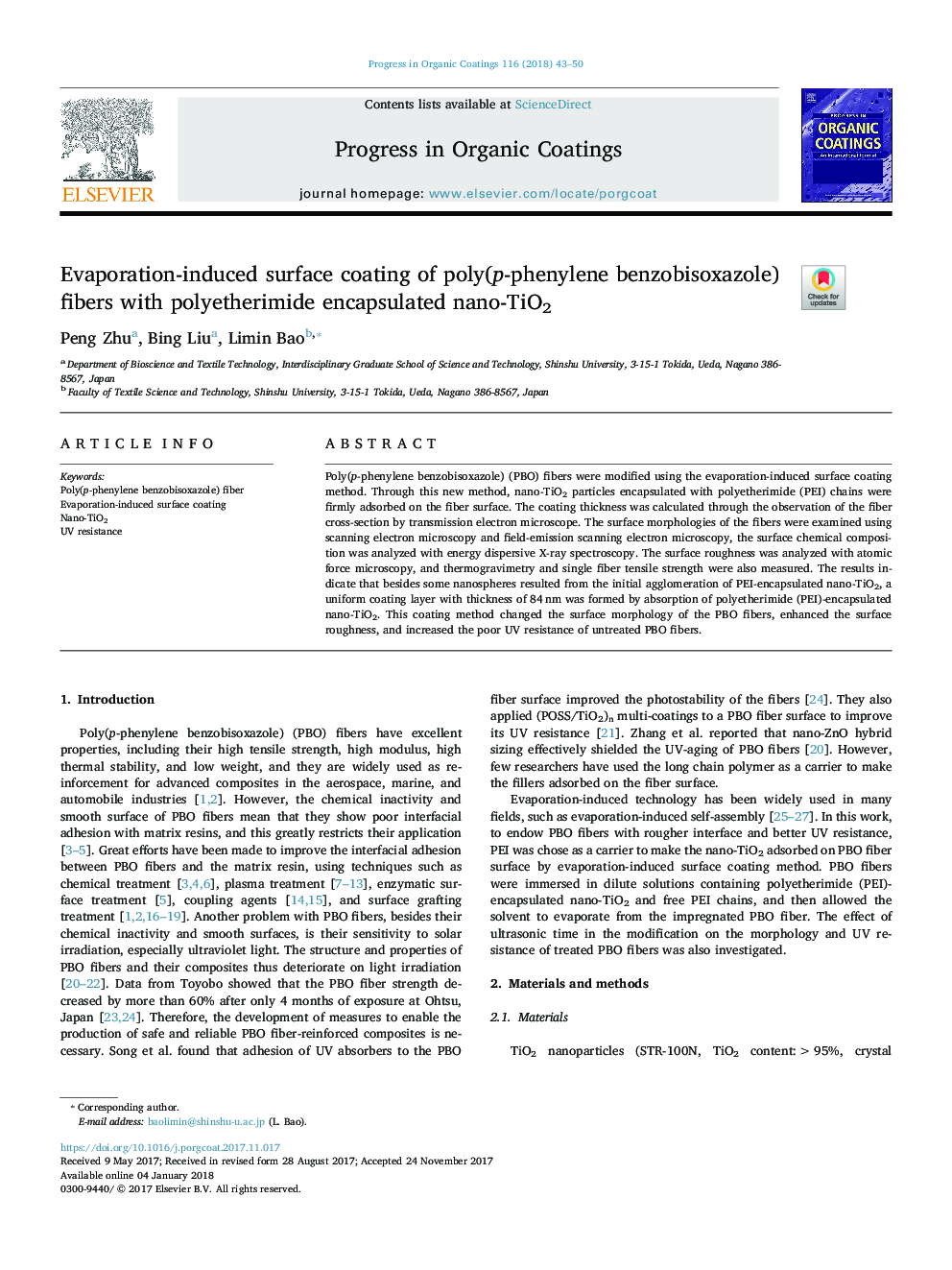| Article ID | Journal | Published Year | Pages | File Type |
|---|---|---|---|---|
| 7106125 | Progress in Organic Coatings | 2018 | 8 Pages |
Abstract
Poly(p-phenylene benzobisoxazole) (PBO) fibers were modified using the evaporation-induced surface coating method. Through this new method, nano-TiO2 particles encapsulated with polyetherimide (PEI) chains were firmly adsorbed on the fiber surface. The coating thickness was calculated through the observation of the fiber cross-section by transmission electron microscope. The surface morphologies of the fibers were examined using scanning electron microscopy and field-emission scanning electron microscopy, the surface chemical composition was analyzed with energy dispersive X-ray spectroscopy. The surface roughness was analyzed with atomic force microscopy, and thermogravimetry and single fiber tensile strength were also measured. The results indicate that besides some nanospheres resulted from the initial agglomeration of PEI-encapsulated nano-TiO2, a uniform coating layer with thickness of 84â¯nm was formed by absorption of polyetherimide (PEI)-encapsulated nano-TiO2. This coating method changed the surface morphology of the PBO fibers, enhanced the surface roughness, and increased the poor UV resistance of untreated PBO fibers.
Keywords
Related Topics
Physical Sciences and Engineering
Chemical Engineering
Process Chemistry and Technology
Authors
Peng Zhu, Bing Liu, Limin Bao,
